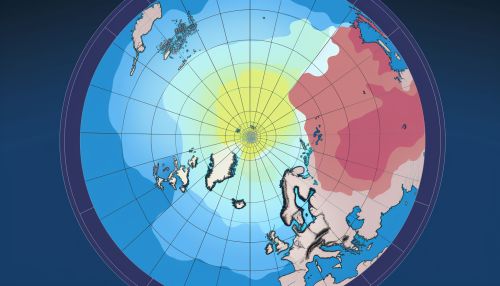The Role of Geostatistics in Predicting Sea Ice Extent
Introduction
Geostatistics is a branch of statistics focusing on spatial or spatiotemporal datasets. Developed originally to predict probability distributions of ore grades for mining operations, it is currently applied in diverse disciplines including petroleum geology, hydrogeology, and meteorology. In the context of sea ice extent prediction, geostatistics plays a crucial role by providing tools and techniques to analyze spatially correlated data.


Geostatistical Methods
Geostatistical methods are primarily concerned with the statistical study of spatially distributed data. These methods are based on the concept of spatial autocorrelation, which refers to the degree of similarity between values at different locations in space. In the case of sea ice extent prediction, geostatistical methods can be used to analyze satellite imagery data, sea temperature data, and other relevant spatial datasets.


Kriging
Kriging is a key geostatistical method used in the prediction of sea ice extent. Named after the South African mining engineer Danie Krige, Kriging is a method of interpolation for which the interpolated values are modeled by a Gaussian process governed by prior covariances. In the context of sea ice extent prediction, Kriging can be used to interpolate sea ice concentration data from satellite imagery, providing a more detailed and accurate prediction of sea ice extent.
Variogram Analysis
Variogram analysis is another important geostatistical tool used in the prediction of sea ice extent. A variogram is a function describing the degree of spatial dependence of a spatial random field or stochastic process. In the context of sea ice extent prediction, variogram analysis can be used to quantify the spatial autocorrelation of sea ice concentration data, providing valuable insights into the spatial structure of the sea ice.


The Role of Geostatistics in Predicting Sea Ice Extent
The prediction of sea ice extent is a complex task that involves the analysis of a large amount of spatially distributed data. Geostatistics provides the necessary tools and techniques to analyze this data and make accurate predictions.


Data Collection and Preprocessing
The first step in the prediction of sea ice extent is the collection and preprocessing of relevant data. This may include satellite imagery data, sea temperature data, wind speed data, and other relevant spatial datasets. Geostatistical methods can be used to preprocess this data, removing noise and correcting for any spatial bias.
Spatial Analysis
Once the data has been collected and preprocessed, geostatistical methods can be used to perform a detailed spatial analysis. This may involve the use of Kriging to interpolate sea ice concentration data, or variogram analysis to quantify the spatial autocorrelation of the data.
Prediction
Based on the results of the spatial analysis, geostatistical methods can be used to make predictions about future sea ice extent. These predictions can be used to inform climate models, guide shipping routes, and support wildlife management efforts.


Conclusion
In conclusion, geostatistics plays a crucial role in the prediction of sea ice extent. By providing tools and techniques to analyze spatially correlated data, geostatistics allows scientists to make accurate predictions about future sea ice extent, supporting a wide range of climate-related research and applications.
